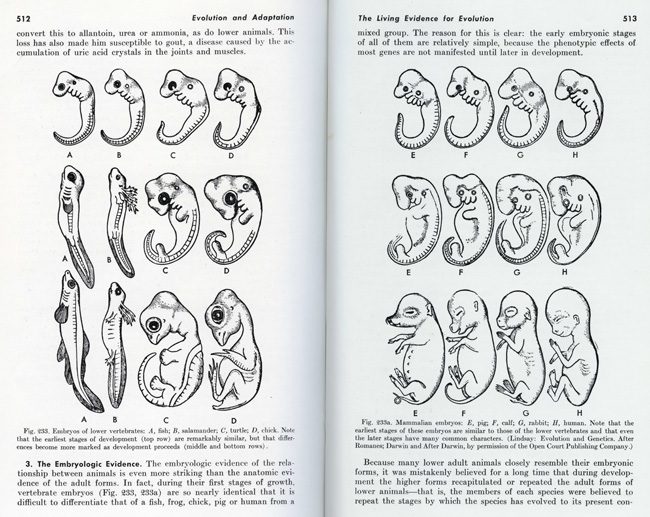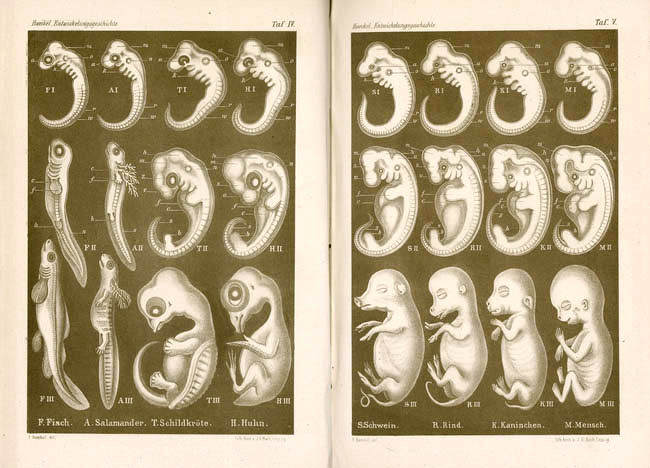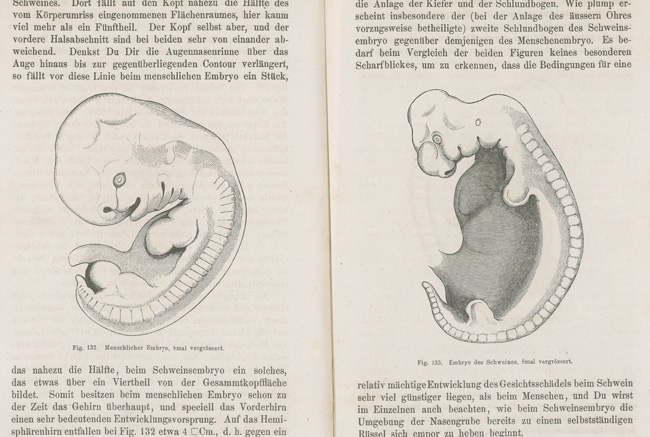Forgery charges
Some university teachers of embryology welcomed Haeckel’s pictures, but experts who disagreed with his particular approach to Darwinism accused him of making embryos look more similar than they really are.
Haeckel was criticized fast, but the attacks took several years to take off. The Basel zoologist Ludwig Rütimeyer raised the alarm. First, he charged Haeckel with having figures representing different species printed from the same block . Obviously sharp practice, Haeckel corrected this in the second edition and eventually explained it away as ‘extremely rash foolishness’. Second, Rütimeyer said Haeckel had tendentiously miscopied standard illustrations. This was much more debatable. Even as the Natural History of Creation made Haeckel a lightning rod for Darwinist controversy, these figures had enough competent supporters to stay through many editions.
Haeckel’s second semi-popular book, the Anthropogeny (1874), was filled with new and provocative pictures, including a much expanded comparative embryological grid. Rütimeyer’s ex-colleague, Wilhelm His, who had developed a rival, physiological embryology, which looked, not to the evolutionary past, but to bending and folding forces in the present. He now repeated and amplified the charges, and lay enemies used them to discredit the most prominent Darwinist. But Haeckel argued that his figures were schematics, not intended to be exact. They stayed in his books and were widely copied, but still attract controversy today.
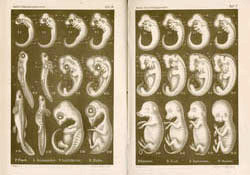
Haeckel’s expanded embryological comparison, 1874 |
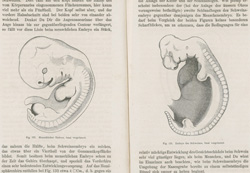
Illustrations by Wilhelm His to show ‘the specific physiognomies of young embryos’, 1874 |


